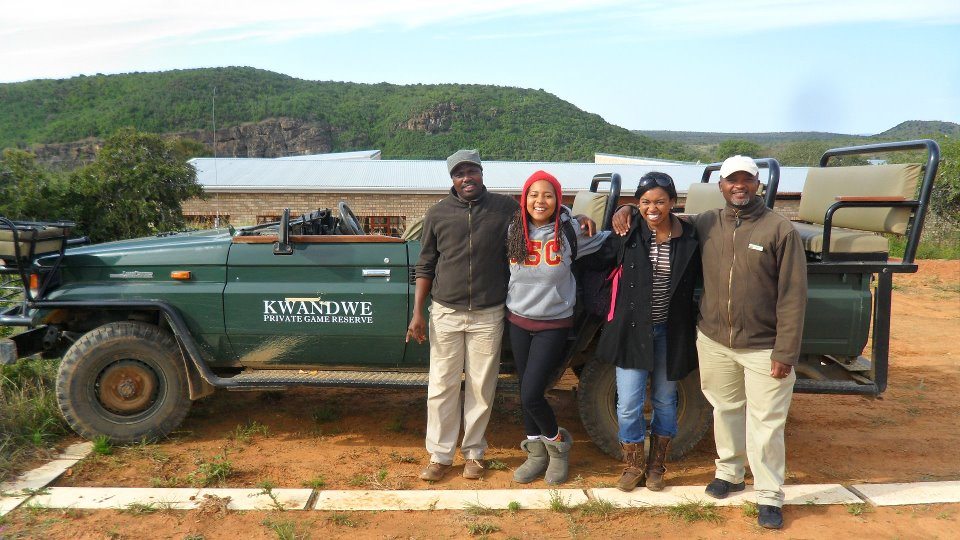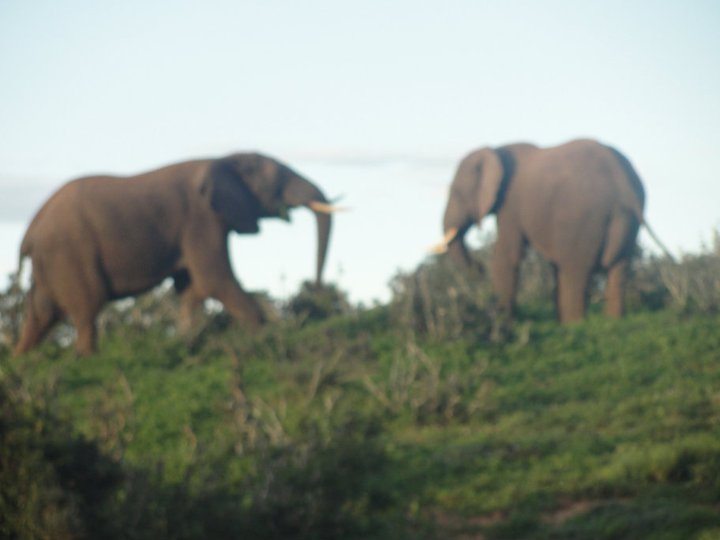Prince Harry Proves Why Poaching Needs To Stop With These Touching Photos
Requests: 0
Views: 9
Until I took a trip to South Africa several years ago, I really didn’t know much about poaching and its devastating impact.
It was when my friend and I went on a safari at Kwandwe Private Game Reserve that I saw its impact as there were hardly any rhinos to see.
 The safari was one of the best experiences of my life. (Photo courtesy of Ashley)
On my ride across the terrain of South Africa, we witnessed only two rhinos: a mother and her baby. It made me cry. It was mesmerizing to see these beautiful animals and it was devastating to know that the reason why there were so few of them to see. I was also saddened to learn of the impact it is having on the elephant population.
The experience awakened me, angered me, and moved me to want to raise more awareness of the issue and its impact on animals, particularly the rhinoceros population. I found out that due to the ivory trade, there are currently only 29,000 rhinos that exist, down dramatically from about 500,000 in the early 1900s. More over, there are now only three white rhino species left after one recently died at the San Diego Zoo.
Poaching is disgusting and serious. It is killing our beautiful species. How can we stop it from continuing to happen?! Why are people so greedy for money that they are willing to kill off our beautiful animals?
I’m sure these questions were on the mind of Prince Harry during his recent tour of Kruger National Park in South Africa. He documented the entire trip on Instagram. His photos are dramatic and very emotional. One shows him sadly looking at the carcasses left behind by the poachers. There’s another where he is captured hugging an elephant that had been sedated for examination. He said this about the experience in the caption:
The safari was one of the best experiences of my life. (Photo courtesy of Ashley)
On my ride across the terrain of South Africa, we witnessed only two rhinos: a mother and her baby. It made me cry. It was mesmerizing to see these beautiful animals and it was devastating to know that the reason why there were so few of them to see. I was also saddened to learn of the impact it is having on the elephant population.
The experience awakened me, angered me, and moved me to want to raise more awareness of the issue and its impact on animals, particularly the rhinoceros population. I found out that due to the ivory trade, there are currently only 29,000 rhinos that exist, down dramatically from about 500,000 in the early 1900s. More over, there are now only three white rhino species left after one recently died at the San Diego Zoo.
Poaching is disgusting and serious. It is killing our beautiful species. How can we stop it from continuing to happen?! Why are people so greedy for money that they are willing to kill off our beautiful animals?
I’m sure these questions were on the mind of Prince Harry during his recent tour of Kruger National Park in South Africa. He documented the entire trip on Instagram. His photos are dramatic and very emotional. One shows him sadly looking at the carcasses left behind by the poachers. There’s another where he is captured hugging an elephant that had been sedated for examination. He said this about the experience in the caption:
 (Photo courtesy of Ashley)
(Photo courtesy of Ashley)
 The safari was one of the best experiences of my life. (Photo courtesy of Ashley)
On my ride across the terrain of South Africa, we witnessed only two rhinos: a mother and her baby. It made me cry. It was mesmerizing to see these beautiful animals and it was devastating to know that the reason why there were so few of them to see. I was also saddened to learn of the impact it is having on the elephant population.
The experience awakened me, angered me, and moved me to want to raise more awareness of the issue and its impact on animals, particularly the rhinoceros population. I found out that due to the ivory trade, there are currently only 29,000 rhinos that exist, down dramatically from about 500,000 in the early 1900s. More over, there are now only three white rhino species left after one recently died at the San Diego Zoo.
Poaching is disgusting and serious. It is killing our beautiful species. How can we stop it from continuing to happen?! Why are people so greedy for money that they are willing to kill off our beautiful animals?
I’m sure these questions were on the mind of Prince Harry during his recent tour of Kruger National Park in South Africa. He documented the entire trip on Instagram. His photos are dramatic and very emotional. One shows him sadly looking at the carcasses left behind by the poachers. There’s another where he is captured hugging an elephant that had been sedated for examination. He said this about the experience in the caption:
The safari was one of the best experiences of my life. (Photo courtesy of Ashley)
On my ride across the terrain of South Africa, we witnessed only two rhinos: a mother and her baby. It made me cry. It was mesmerizing to see these beautiful animals and it was devastating to know that the reason why there were so few of them to see. I was also saddened to learn of the impact it is having on the elephant population.
The experience awakened me, angered me, and moved me to want to raise more awareness of the issue and its impact on animals, particularly the rhinoceros population. I found out that due to the ivory trade, there are currently only 29,000 rhinos that exist, down dramatically from about 500,000 in the early 1900s. More over, there are now only three white rhino species left after one recently died at the San Diego Zoo.
Poaching is disgusting and serious. It is killing our beautiful species. How can we stop it from continuing to happen?! Why are people so greedy for money that they are willing to kill off our beautiful animals?
I’m sure these questions were on the mind of Prince Harry during his recent tour of Kruger National Park in South Africa. He documented the entire trip on Instagram. His photos are dramatic and very emotional. One shows him sadly looking at the carcasses left behind by the poachers. There’s another where he is captured hugging an elephant that had been sedated for examination. He said this about the experience in the caption:
To help with saving the lives of the rhinos, some countries are de-horning rhinos. Here’s what Prince Harry says about this:
Prince Harry hopes his trip will raise awareness on stopping poaching as it would not only save the lives of animals, but it would also help the lives of those within countries, like South Africa. Interestingly, poaching actually hurts tourism, which then increases poverty and prevents national parks from job creation. Luckily, there are big moves being made to stop poaching. For example, the U.S. and China recently signed an agreement aimed at stopping the ivory trade; there has been an increase in local support for anti-poaching efforts (like Save the Rhino, the Black Mambas); and former poachers are turning against the trade after seeing its negative impact on their own communities. However, there is still more work to be done. I do believe with the increase amount of awareness and with tremendous efforts, I will one day journey back to South Africa and see a dramatic increase in the presence of these awe-inspiring, beautiful animals.
 (Photo courtesy of Ashley)
(Photo courtesy of Ashley)
Reactions